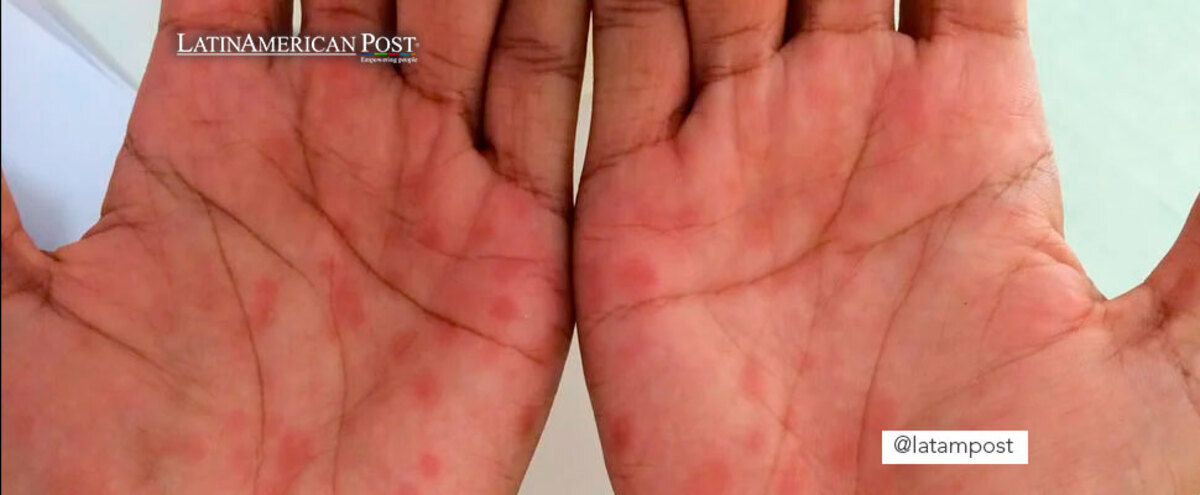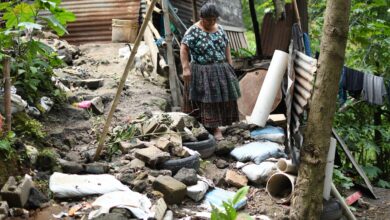Keys To Understanding Syphilis And How To Prevent It
Although it is a preventable and curable disease, a report by the Pan American Health Organization (PAHO) and the World Health Organization (WHO) states that by the end of 2021, cases of syphilis and congenital syphilis have grown in Latin America and the Caribbean.

Photo: canalsalud.imq.es
LatinAmerican Post | Daniel Alejandro Vergara
Listen to this article
Leer en español: Crece la sífilis: claves para comprender sus síntomas y cómo prevenirla
Syphilis is a sexually transmitted disease (STD) that in most cases is transmitted through sexual contact thanks to a bacterium present in the genital organs. The origin of this disease remains a mystery, there are several hypotheses that claim that it has been present since the pre-Columbian period. Likewise, this STD can be transmitted during the gestation periods of women, causing babies to suffer from congenital syphilis.
The report "Epidemiological Review of Syphilis in the Americas" states that about 4.6 million people have syphilis in the region. For their part, Latin America and the Caribbean have one of the highest prevalence rates of the disease in the world with 1.3%.
This represents a public health problem throughout the region and forces governments to double down on efforts to reduce the presence of the disease. At the World Health Assembly in 2016, various countries of the Americas committed to reducing syphilis cases by 90% by 2030. Contrary to this agreement, currently the figures reported by PAHO are more than 30,000 cases between syphilis and congenital syphilis.
Contracting syphilis before and during the gestation period represents a latent risk for mothers and their children, it is for them that PAHO created a strategy in 2019 that seeks to combat infections and STDs in pregnant women to reduce the risks and levels of morbidity and mortality. This strategy contemplates carrying out both prenatal and pregnancy tests in order to treat mothers, babies and sexual partners with the correct medications and thus avoid further infections and worsening of clinical symptoms.
We suggest you read: Respiratory Allergies, Asthma and Rhinitis Increase Due to Climate Change
Although it is a dangerous disease due to the symptoms it can cause in those who suffer from it, if it is detected early it can be cured with some antibiotics such as penicillin, specifically prescribed by health services.
Some symptoms can be:
According to the CDC (Centers for Health and Disease Control), symptoms in adults can be divided into 3 phases:
Phase 1:
In this first phase, a small sore is evident, which can last from 3 to 6 weeks. This appears in the place where the infection was contracted, it is possible that other types of skin erosions may appear that cause discomfort, redness and itching.
Phase 2:
Here with the subsequent disappearance of the first sore, rashes will occur in various parts of the body, mainly the mouth, the palms of the hands and the genital organs. Additionally, fatigue, fever, muscle pain and various symptoms of common illness may appear, the potency of these symptoms depending on whether or not the infection is treated.
Phase 3:
It is the most advanced and occurs due to not receiving adequate treatment, in this case syphilis can continue to be present in the body for several years and when its symptoms are present it can affect the motor system, cause blindness, some neuronal problems, cardiopulmonary complications and finally death. In the case of congenital syphilis, it can cause premature abortions in pregnancies, advance births and disabilities in newborns.
How do you prevent getting syphilis?
Being a Sexually Transmitted Disease, the most effective way is to avoid having sex. However, if you are a sexually active person, you can use everyday prevention methods such as condom use, good hygiene before, during and after sexual intercourse, constant medical check-ups and tests that diagnose STDs.
Although the figures in the region represent an alarm for health entities and organizations, strategies such as that of the Latin American Center for Perinatology, Women's and Reproductive Health (CLAP) are created daily, which will help teach a virtual course of public access , so that health workers in Latin America and the Caribbean can have more tools in the processes of identification, prevention and treatment of different infections and STDs.
It is important to highlight that although syphilis and congenital syphilis are a public health problem and governments are obliged to help reduce their infection rates; it is in the hands of citizens to help health institutions to prevent and diagnose this type of STD through constant monitoring and sexual responsibility.




